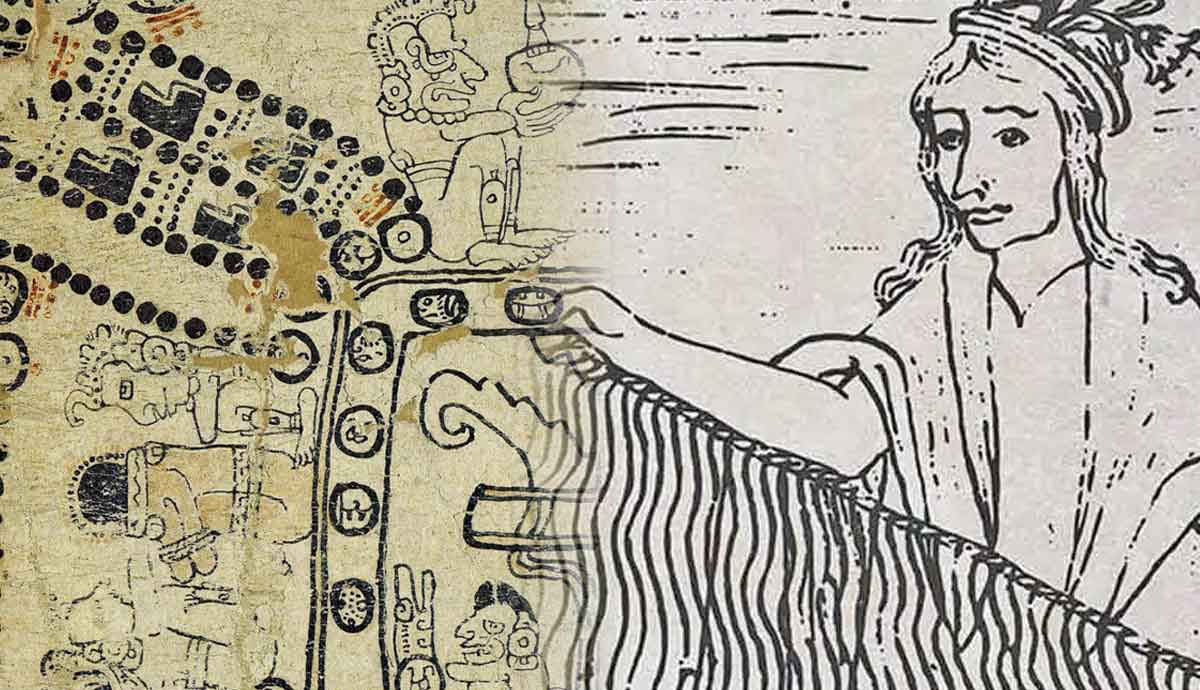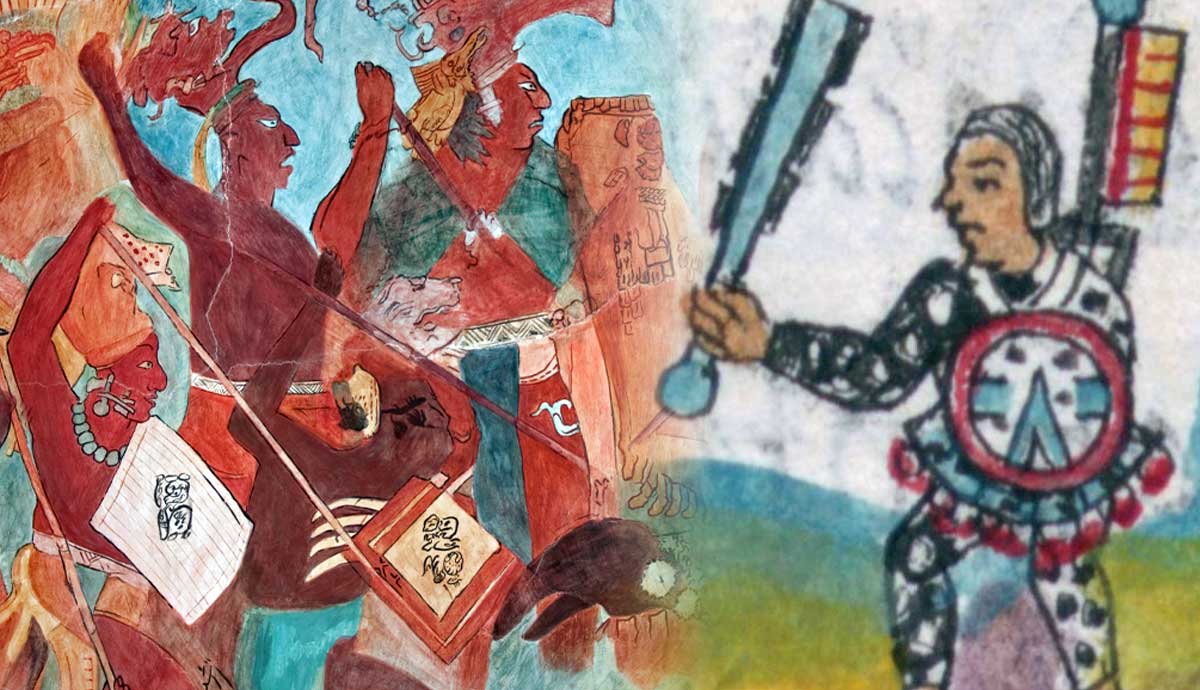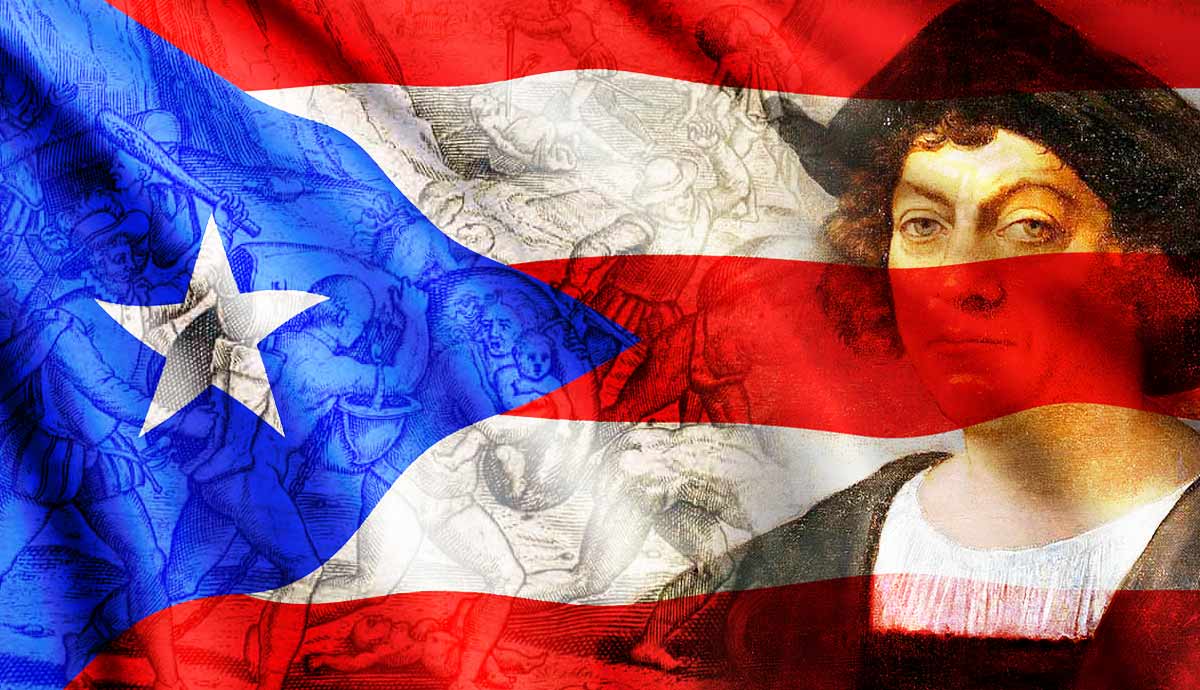
Writing is believed to have developed independently at least three separate times, most recently in the present-day Americas. Despite the colonizers’ penchant for destroying Indigenous artifacts, scholars have been able to identify nearly a dozen pre-Columbian writing systems from Mesoamerica and South America, largely comprised of glyphs. From the earliest writing pioneered by the Olmecs to Inca “talking knots,” the Americas’ pre-contact cultures were as invested in recording their histories as modern man.
Script 101: What Is Writing?

From pens and pencils to laptops and smartphones, a modern human spends so much time writing they likely rarely stops to consider what writing actually is. But before taking a deep dive into pre-Columbian writing systems, it’s essential to establish what constitutes writing—or what doesn’t.
According to Steven Fischer, writing historian, a writing system requires a set of symbols, produced on a physical or digital material, which mimic spoken language in order to communicate a particular point. Writing systems can be broadly understood as falling into one of two categories: meaning-based and sound-based. Meaning-based systems use symbols, or logographs, to represent whole words or parts of words, like prefixes and suffixes. Sound-based systems are those in which symbols represent a sound (as in an alphabet) or a syllable. Scholars note that even in writing systems that were initially entirely logographic, as language and writing evolved, phonetic symbols were usually incorporated to accurately reflect the spoken language.
Proto-writing also uses symbols, but to convey a more limited set of ideas—for example, names or numbers—independent of a specific language. It may exist on its own but is often the precursor to more complex writing systems.
Protowriting or Writing? Early Mesoamerican Scripts

While scholars disagree on whether it constitutes a true writing system or not, Olmec hieroglyphs are widely believed to be the oldest writing or protowriting system that developed in what is today Latin America. Thriving in present-day southern Mexico from 1500 BCE to 400 BCE, the Olmec are often considered the Mesoamerican “mother” culture, from which numerous later civilizations developed. They are perhaps most famous for their giant stone head carvings. While little remains of them compared to civilizations like the Aztec and Maya, researchers have found evidence that their culture began using a (proto)writing system as early as 900 BCE.
The oldest evidence of potential Olmec writing is the Cascajal block. First discovered in the late 1990s in what is today Veracruz, the block features a collection of 62 pictographs that some scholars argue indicate a complete, if yet indecipherable, writing system. Brown University scholars who have studied the block indicate that the use of sequencing patterns and a consistent order point to a true writing system.

While not all scholars agree that those particular glyphs constitute a writing system, later examples from the Olmec culture are widely agreed to be, at the least, protowriting. Several examples of toponyms—symbols that represent specific place names—have been recorded as far back as 900 BCE, while a number of monument sculptures dated to 500 BCE and later in the Olmec period feature glyphs believed to be part of a writing system. These include inscriptions found at La Venta, one of the best-known Olmec archaeological sites, as well as the San Andres archaeological site, where a seal was discovered featuring what scholars believe are logograms for the words “king,” “three” and “Ajaw,” a reference to their calendar.
Shortly after the Olmec civilization began to decline, the Zapotec began to rise and, arguably, write. Centered in present-day Oaxaca, the Zapotec established settlements first at San José Mogote and later at Monte Alban, where evidence of writing can be found today. The earliest examples are glyphs that appear to reference names and dates. Writing carved into stone monuments seems to have often been used as propaganda, showcasing the names and dates of enemies sacrificed, as well as the names of rulers and places conquered. Scholars note, however, that writing may well have been used for other purposes but on less durable materials that have since been lost. Zapotec script was in use for an extensive period of time, from the 5th century BCE through the 8th century CE.

Another early script still mystifying scholars is the Isthmian script, used in present-day southern Mexico before the rise of the Maya, in the early centuries CE. A small number of artifacts featuring the script have been found, including stelae and masks, but scholars have been unable to definitively connect it with any of its predecessors or the Maya that inhabited the region in later periods. While scholars initially associated it with the Olmec, calling it “Epi-Olmec” or post-Olmec script, more recent discoveries have called early claims to have deciphered the script into question.
Mesoamerican Writing: Logosyllabic Systems

As more advanced civilizations developed in Mesoamerica, they crafted what has been widely recognized as writing systems, which were in use prior to and when the colonizers arrived. In contrast with the alphabet the Spanish were using at the time, all of the Mesoamerican writing systems were logosyllabic systems: partially logographic and partially phonetic.
Unlike the earlier writing systems, which have been preserved primarily on monuments and decorative objects, evidence of these scripts is also found in what can practically be called books. Commonly referred to as codices, these manuscripts were often written on tree bark or deerskin and contain detailed information about everything from their mythology to the histories of their civilizations and leaders to registers of tributes from conquered tribes. Often given names connected with their discovery or the museum that housed them, today, there is a push to rename these codices based on their actual origins.
At least three separate glyph writing systems developed in Mesoamerica before European contact: Aztec, Mixtec, and Maya.
1. Aztec Glyphs

Aztec script, thought to have developed from Zapotec and earlier writing systems, is comprised of logograms representing words, as well as pictographs representing entire ideas or concepts. Scroll lines, for example, are a common pictorial element used to indicate speech. Some scholars have also identified syllable glyphs, but it is unclear whether these preceded the conquest or developed with the influence of the Spanish. That some codices employ more syllabic glyphs than others may simply be a stylistic difference dependent on where the scribe was taught.
When the Spanish arrived, the Aztec reportedly had libraries of books recording their history and mythology, which were promptly destroyed. Only two pre-conquest codices are believed to exist, including the Codex Borbonicus. Yet, after the initial events of the conquest, Aztec scribes re-wrote some of the information using the original script, and more of these still exist today. While scholars argue that the contents of these books may have been influenced by the Spanish themselves, they still provide examples of Aztec writing that researchers have been able to study.

Gordon Whittaker, a scholar who has studied Aztec glyphs extensively, notes that while script was used almost exclusively for recording numbers, place names and personal names, titles, and social or class designations, it employed a complex system of logograms and syllable glyphs as well as phonetic designations to render this information, including unfamiliar Spanish names that weren’t easily adapted into Nahuatl during the colonial period.
What seems clear is that Aztec writing is more open to interpretation than other writing systems of the time. There is no consistent reading order evident in the remaining manuscripts, and scholars believe many were designed to be akin to mnemonic devices rather than books in the modern sense—the glyphs would help readers recall the myths and stories outlined in the book rather than spelling everything out.
2. Mixtec Glyphs

The Mixtec, or Ñuu Dzavui in their own language, was a smaller civilization than the Aztecs, occupying a mountainous region in what is now southern Mexico when the Spanish arrived, their kingdoms having first taken shape in the 10th century CE. While the Aztec reportedly exacted tribute from the Mixtec and other cultures in the area, they did not occupy the region or force its inhabitants to assimilate. Hence, the Mixtec were able to retain their own culture, which included a stylistically similar but distinct script.
Like the Aztec and Maya, the Mixtec created codices, in their case, to record the genealogies of their ruling families, as well as their mythologies and religious practices. Like the other inhabitants of Mesoamerica, many of these valuable books were destroyed by the colonizers. The Mixtec made out better than the Aztec in this regard, with at least six of their pre-conquest codices known to exist today.
Like the other written languages of the time, Mixtec script is largely pictographic, with some logograms matching those used by the Zapotec and other cultures. Unlike their contemporaries, the Mixtec were thoughtful enough to include guidelines in their texts. These painted lines, either vertical or horizontal, depending on the origin of the codex and the time period, indicate the correct direction in which to read the texts. This was perhaps due in part to the fact that the books were intended to be used as scripts for reenacting historical events during celebrations.
3. Maya Glyphs

Maya script began to develop in the pre-Classic period, perhaps as early as 300 BCE. It would ultimately include over 800 glyphs representing both whole words and syllables, and scholars believe it is the most complete writing system from the New World. The symbols were arranged in blocks, then usually ordered in paired columns; they were then read from the top left in pairs. Though the Mayan civilization had long since fallen by the time Europeans arrived, smaller communities of Maya still existed, and the script was still in use at the time of the conquest.
That any Maya texts remain is somewhat miraculous. Friar Diego de Landa, tasked with converting the Maya to Christianity, organized the burning of an unknown number of “heretical” Maya texts in 1562, noting in his own records that “…[the Maya] regretted to an amazing degree and which caused them great affliction.”
The forced assimilation of the Indigenous led to the script’s quick demise, and that the Maya had a written language at all seems to have been forgotten by the end of the 16th century. When the glyphs eventually began to be studied in the modern era, they had to be deciphered from scratch. Initially believed to be entirely logographic, the theory proposed in the mid-twentieth century that the script also included syllable glyphs led to rapid progress in deciphering it.

Ironically, de Landa himself unwittingly contributed to this effort. After hosting the book-burning party that devastated his gracious hosts, he later asked the Indigenous people to help him record a Mayan “alphabet” to include in his record of his work in the region, Relación de las cosas de Yucatán—so he could defend himself against allegations of improper behavior back in Spain. The Maya, of course, did not have an alphabet, but his rough pass at capturing some basic syllable glyphs and their Spanish alphabet equivalents came in handy when efforts to decipher Mayan texts began in earnest in the 20th century.
Knot Writing: The Inca Quipus

For centuries, it was believed that none of the cultures that developed in South America before European contact, most notably the Inca, who had an expansive and thriving civilization when the conquistadors arrived, had developed writing. While it’s true that no script has been found, the Inca implemented a unique communication system that some scholars argue constitutes writing: quipus.
Quipus—from the Quechua khipu—were woven cords marked by knots created at intervals to record information. Much like the textiles the Inca were famous for, quipus could be quite intricate, almost works of art. Each quipu had a central cord with numerous sub-cords attached to it. The colors, construction of the cord, types of knots, distance between knots, and groupings of the sub-cords were all elements of the record-keeping system. Quipus were crafted and maintained by experts called quipucamayocs, though scholars believe the nobility may also have been taught to “read” them.
Originally, it was believed that quipus were solely an abacus-like accounting system to keep track of tributes, warehouse inventories, census counts, and other numerical data. As the vast majority of quipus were destroyed by the Spanish, modern researchers have only a few hundred remaining artifacts to study, but what they’ve discovered suggests quipus may have been used to record and relay more complex information and that some were perhaps narrative.

Even as far back as the 16th century, Spanish chroniclers’ descriptions suggest that quipus were more than just numbers. Garcilaso de la Vega, son of a conquistador and one of Huayna Capac’s nieces, wrote that quipus recorded “…battles and fights, all the embassies that had come to visit the Inca, and all the speeches and arguments they had uttered.” Others noted that the Inca runners, chaskis, transported quipus as letters between correspondents.
More recently, scholars have been able to “decode” some existing quipus by comparing them with extant census records in Spanish, and propose that in addition to numbers, elements of the quipu construction indicate names and places and perhaps even social status. Studying a pair of quipus from the 18th century, scholar Sabine Hyland made the claim that “…the khipus contain 95 different symbols, a quantity within the range of logosyllabic writing and notably more symbols than in regional accounting khipus.”
While no definitive conclusion has been reached about whether quipus constitute the missing “writing system” that scholars would expect to find in a civilization as advanced as the Inca, attempts to decode the remaining quipus may one day provide an answer.










